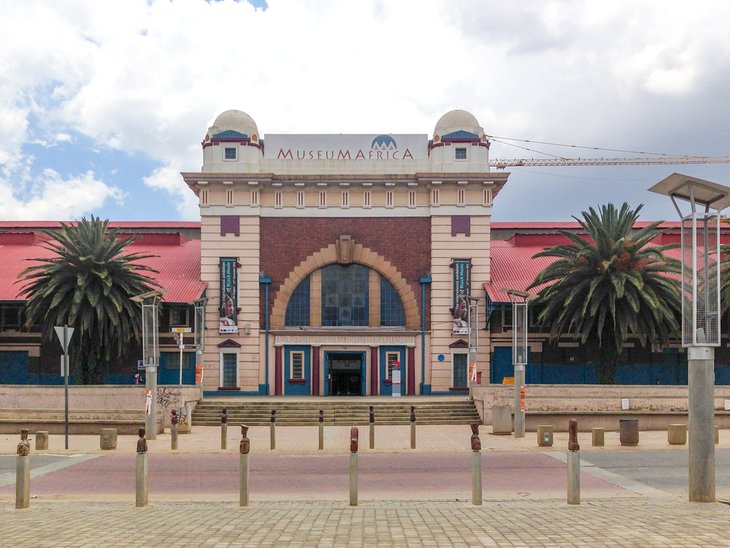The Of Johannesburg North Attractions
The Of Johannesburg North Attractions
Blog Article
The Greatest Guide To Johannesburg North Attractions
Table of ContentsThe Greatest Guide To Johannesburg North AttractionsA Biased View of Johannesburg North AttractionsGetting The Johannesburg North Attractions To WorkThe Ultimate Guide To Johannesburg North AttractionsThe Best Strategy To Use For Johannesburg North AttractionsAn Unbiased View of Johannesburg North Attractions
The city grew on the side of the Witwatersrand Main Coral reef, a subterranean stratum of gold-bearing quartz-silica conglomerate that arcs for hundreds of miles below the Highveld - Johannesburg North attractions. Most of the gold mines in the city stopped operation in the 1970s, but in its day the Witwatersrand gold market accounted for more than 40 percent of the world's yearly gold production.Johannesburg has a warm climate. Summer temperature levels average about 75 F (24 C); wintertime temperature levels balance concerning 55 F (13 C) and just sometimes dip listed below cold. The city takes pleasure in about eight hours of sunshine daily in both wintertime and summer. Rain averages regarding 28 inches (700 millimetres) per annum, but the total varies substantially from year to year.
What rain the city receives falls nearly specifically in the summer season months, usually in incredible late-afternoon electrical storms. Air contamination positions a significant problem, specifically in the winter season, when thermal inversions impede the westward flow of air from the Indian Sea. Air pollution is most serious in the densely cleared up Black municipalities on the city's periphery, where lots of homeowners still count on coal for gas.

Johannesburg North Attractions Things To Know Before You Get This
The equilibrium of the city is occupied by whites. Holiday accommodation varies in personality and top quality.
Physical development, although rather limited by transportation, continued rapidly as migration to South Africa, and Johannesburg in particular, boosted significantly. This issue was addressed in the 1930s when the automobile was introduced in automation to South Africa. Cars were, for the a lot of component, confined to the well-off, and permitted them to transfer to the north of the city and commute right into the centre.
Many bad residential areas were blended, with poor blacks and whites cohabiting, although the affluent residential areas were typically reserved for whites. This transformed with the political election of the National Party in the 1948 political elections, that started to formalise the system referred to as racism. Discrimination officially assigned which residential areas each race could reside in under the Team Areas Act.
The previous system of eleven phoned number areas was reorganised in 2006. Marshalltown, as seen from the top of the Carlton Centre. The M1 and M2 run behind the buildings, and the southerly suburbs expand past the highway limit. The internal city of Johannesburg lies within the city's Area F. The approximated populace of the area is 200,000, [] The number of individuals living in the internal city on an informal basis is unidentified, as several are unlawful immigrants. Most higher-income locals and white people have moved to the north suburban areas and have been changed by lower-income black individuals. The unemployment, education, and age profiles of the location are all unknown, due to the problem of obtaining dependable details regarding the area.
Top Guidelines Of Johannesburg North Attractions
Yeoville and Bellevue have a mix of apartment and single property systems on small whole lots. The area lies on a hilly divide that runs from eastern to west. The most noticeable geographic feature is Observatory Ridge, which is named for the big observatory situated on it. The recreational rooms are no longer made use of, due to safety and security problems.

Not known Factual Statements About Johannesburg North Attractions
R. Tambo see this International Flight Terminal). The eastern suburban areas are a few of the earliest locations of Johannesburg, there are large neighborhoods of Jewish and other European histories, the majority of the populace is English speaking. There are 3 golf links in addition to a variety of protected ridges with viewsites. There are numerous well-developed and up-market home entertainment and buying locations in the east such as the Eastgate Mall and the Greenstone shopping center.
The area is primarily made up of old "matchbox" homes, or four-room homes built by the government, that were developed to give affordable lodging for black employees during discrimination. Soweto is an abbreviation, meaning "South Western Townships". Street after street in this area is lined with matchboxes; nevertheless, he said there are a couple of smaller sized areas where prosperous Sowetans have constructed residences that are much more similar in stature with those in even more upscale suburban areas.
Hostels are another noticeable physical function of Soweto. Originally constructed to house male migrant workers, lots of have actually been boosted as homes for couples and households. The N1 Western Bypass skirts the eastern limit of Soweto. The suburban area was not traditionally enabled to develop work centres within the location, so mostly all of its citizens are travelers to other components of the city.
Getting The Johannesburg North Attractions To Work
The property locations in the northern suburban areas are mostly formal, with no significant locations of informal real estate, or housing that does not have a long-term structure. This is a well-known location, there is a fad of land use adjustment from household to business, especially along main arterial roads and around well established nodes.
Roads to the east and west are much less well established, as there are no highways travelling in that direction. In the direction of the northern border of the city, the thickness of development lowers, leaving large areas of go to the website undeveloped land around Midrand.
See This Report about Johannesburg North Attractions
, which is located on a hillside overlooking the internal city and Hillbrow.
Report this page